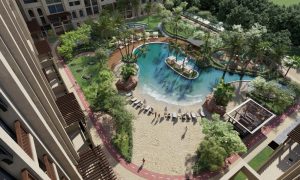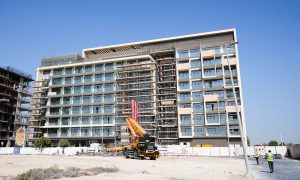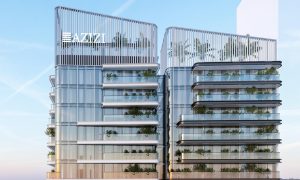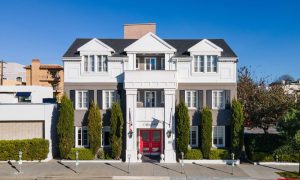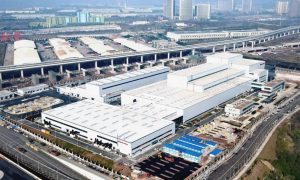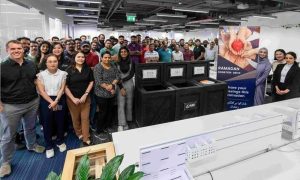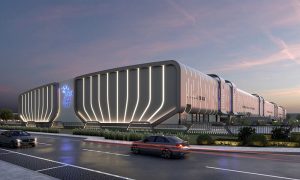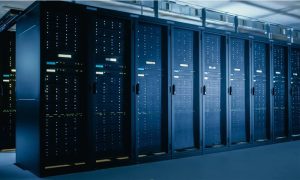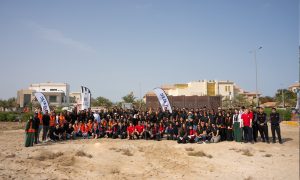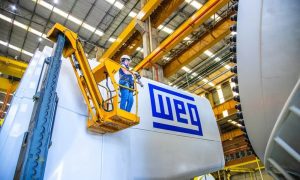Surpassing Net Zero on the table for Sharjah Sustainable City
In 2021, SSC signed an agreement to become the first community in the region to give residents access to a renewable energy storage solution

Diamond Developers has long been an advocate for sustainable development and, in 2010, with the launch of Dubai Sustainable City, it cemented its focus on sustainable urban projects. The developer has since launched Sharjah Sustainable City (SSC), which is being developed in a joint venture (JV) with Sharjah Investment and Development Authority (Shurooq).
Discussing the urban development’s sustainable credentials exclusively with Middle East Construction News (MECN), Ammar A. Tawfeek, Project Director at Sharjah Sustainable City says the project could go beyond achieving Net Zero.
“As the first community in the region to give residents access to a renewable energy storage solution, rooftop solar cells and smart home monitors to control energy demand, SSC strives to go beyond its Net Zero credentials to set the benchmark for a community that ultimately attains Net Positive status,” he states.
He says that SSC is a pioneer in the industry in terms of showcasing how communities can be built sustainably, without compromising on lifestyle. The project’s third phase was recently launched on the back of “overwhelming response to its fully sold out first two phases”.
Describing the project’s sustainable focus in detail, Tawfeek says, “A sustainable city improves the environment, ensures rich biodiversity, reduces air pollution, helps water storage, dampens noise and help cooling down in warm periods. The green spine that runs through the middle of SSC houses the biodomes, the greenhouses where vertical farming will lead to the community producing its own greens and contributing to food security.”
Spread over 7.2m sqft in the Al Rahmaniyah area of Sharjah, the sustainable urban development features rooftop solar panels that will ultimately address the community’s energy needs.
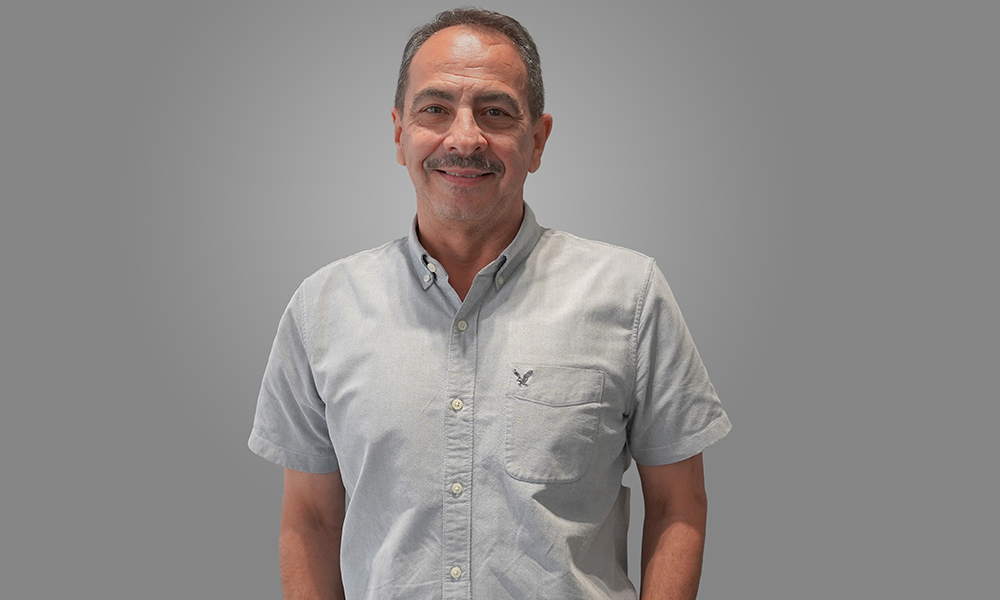
Explaining the solar system, Tawfeek notes, “One of the pillars of the development is harnessing the power of the sun to run the community – the futuristic tone for Sharjah Sustainable City is set by the array of solar panels as people drive in. One of the biggest features of the project is that the rooftop solar photovoltaic cells on the villas and public spaces will offset a significant amount of electricity consumption within the community.”
“Another pivotal part of the project is the deployment of the first net-metering system in Sharjah, which allows unused energy produced by the solar panels to be credited back to owners. We have worked in collaboration with the Sharjah Electricity and Water Authority (SEWA) to secure the approvals to deploy the photovoltaic modules and achieve Net Zero energy.
Asked about how the development tackles energy needs when sunlight is unavailable, he says that the project is one of the first to feature a renewable energy storage solution.
He states, “In 2021, SSC signed an agreement to become the first community in the region to give residents access to a renewable energy storage solution. The move came after the SEE Institute (the research and development arm in The Sustainable City) entered into a memorandum of understanding (MoU) with Hager Group, an international company specialised in renewable energy storage. As the first beneficiary of the agreement, SSC will test and deploy the latest technologies and innovations in demand management and smart energy solutions. The offerings include varied energy solutions such as battery storage, EV charging stations (EEBUS), as well as energy management systems that allow users to control and balance different energy sources and loads.”
The project’s sustainable focus extends beyond just renewable energy; Tawfeek tells MECN that SSC boasts several other sustainable elements that makes it truly stand out as a sustainable urban development in the region.
“While solar power is one of the hallmarks of Sharjah Sustainable City, the project integrates health, environment and other social factors that require high-level commitment to intersectoral cooperation – from the power grid to water management to traffic and transit, to support an emission-free and diverse ecosystem that leverages renewable energy.”

“At SSC, even waste is utilised to create a circular economy: a biogas plant treats organic waste (food waste, green waste, and sludge) and converts a waste problem into a resource – that is into electricity and/or thermal energy. Residues from the biogas plant are dried and used as fertiliser for landscaping, while a Sewage Treatment Plant (STP) to treat wastewater produces Treated Sewage Effluent (TSE) for landscape irrigation, and avoiding emissions associated with water tankers. These features and the multi-stakeholder collaborations it’s taken to fulfil them have already become a benchmark for sustainable projects in the region relying on renewable energy resources,” he points out.
Commenting on how the development has been handling construction waste specifically, Tawfeek says SSC was conceptualised and developed with sustainability as a core pillar, so reducing waste was factored in from the very outset of the project.
“Most of it happens offsite from the careful selection of suppliers and materials and specialised building techniques to create less waste in the construction phase. For example, our building envelope uses precast wall panels, reducing construction waste volume compared to cast-in-situ, and lowers the total embodied carbon. While we cannot comment on the specific data regarding waste diversion, as the waste management is handled by an external contractor, we do ensure that as much material is recycled as possible, from woods and metals to plastic, paper and more.”
Talking about mobility and transportation within the sustainable urban development, Tawfeek is quick to point out that clean mobility and walkability were given a high priority from the project’s inception.
Tawfeek explains, “SSC was designed to be a space for residents that is at once urban, does not harm the environment, and promotes an active lifestyle. One of the core mandates of the project is to maximise the convenience of alternative means of transport – or walking – to discourage the use of private vehicles. To this end, sustainable mobility was built from the inception phase of Sharjah Sustainable City and is therefore reflected in the master plan as a primary component of quality of life. In addition, SSC has been laid out in a grid to facilitate traversing the city on foot to reach mixed-use spaces.”
“There’s an extensive network of walking and cycling tracks to promote an active lifestyle and clean mobility, thereby reducing carbon emissions. This includes 11.8km of rubberised jogging tracks, 1.6km cycling tracks, and 8.4kms of pedestrian walkways. The community also features electric mobility solutions, including charging stations for electric vehicles and a track of 2.4km dedicated to electric autonomous vehicles. The mobility infrastructure built by SSC therefore provides an integrated lifestyle for its residents while reducing carbon emissions.”

Advocating for the broader development of sustainable communities, Tawfeek notes, “By the year 2050, it is estimated that the world will need to provide for and feed around 10bn people, amid a dramatically altered landscape for natural resources and energy consumption. How do we live and prosper in harmony with our planet is one of humanity’s most critical questions at this moment, and this quest has deeply engaged the international community in the frantic search for a sustainable tomorrow.”
“Thankfully in the UAE, that tomorrow is already here and thriving due to the inspiring vision of our leadership – and Sharjah Sustainable City was born out of that vision for a fulfilling future. The project has been designed with the aim of reducing the carbon footprint in Sharjah and will be powered by renewable energy that is produced by solar panels, while recycling water and waste.”
He concludes, “The broad goals of the project include creating a self-sustainable community, encourage clean mobility, contribute to the UAE’s journey to Net Zero emissions, and promote an active and high-quality lifestyle for its residents that is in harmony with its surroundings.”
Read more:
- 96m tall Burj Zanzibar to be built using hybrid timber technology
- How innovating in sustainability and smart cities can pull us back from the brink
- URB to develop $20bn smart and sustainable city in South Africa
